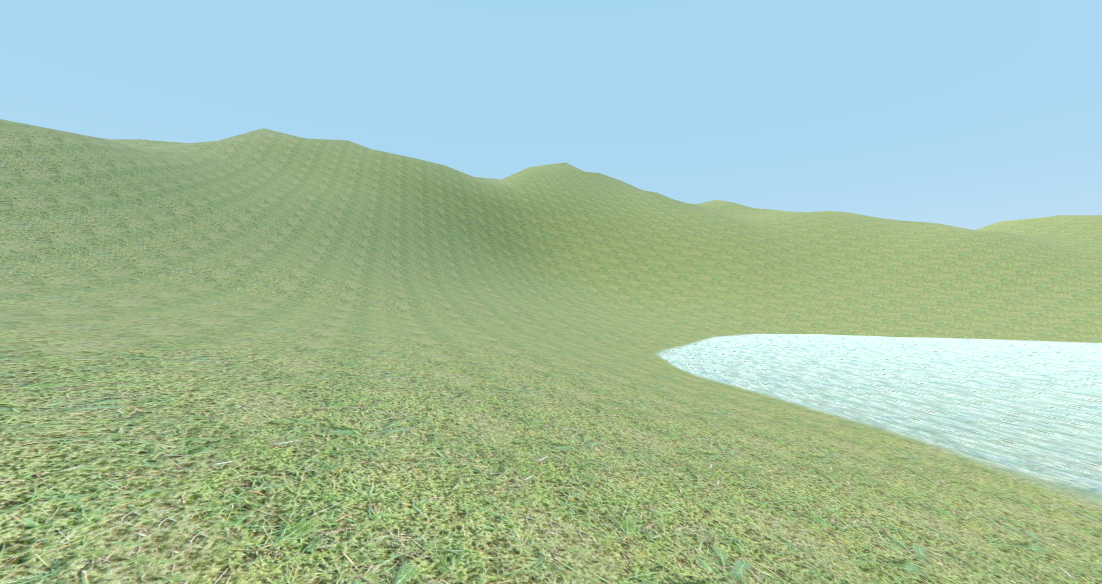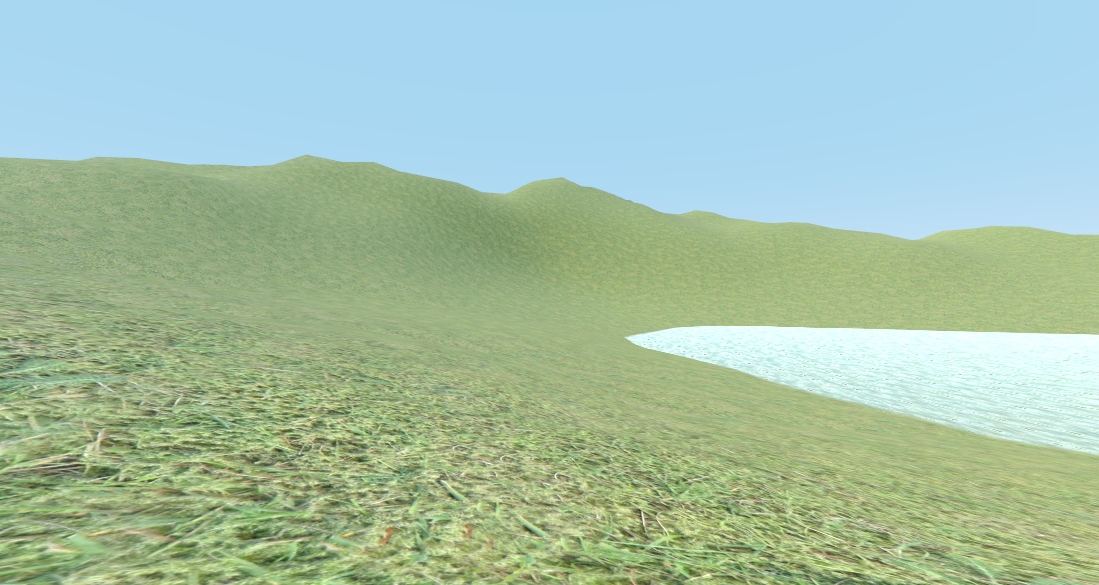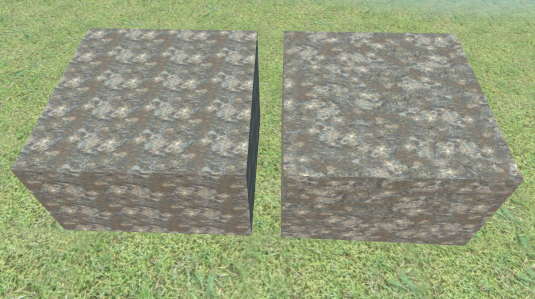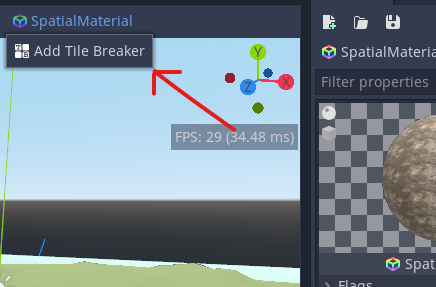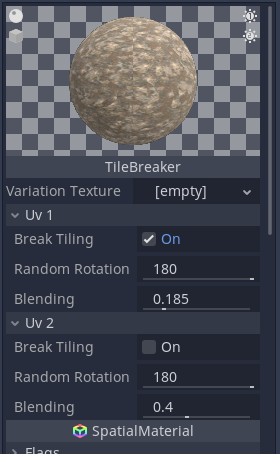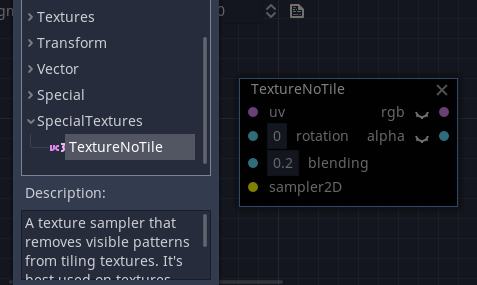Hello fellow Godot users! Have you ever come across this problem before?
Ugh! 😫 Look at all of that distracting tiling pattern in the terrain. Unless you're making a world of quilt, I doubt that you want this showing in your scenery. Well fear not! With this plugin, you'll be able to turn that, into this!
Much better. 😄 Here's a side by side comparison of this feature. Amazing, isn't it?
After downloading this repository, take the folder inside the addons folder, and put it into your project's addons folder. Don't have one? Make one. After that, you enable the plugin in the ProjectSettings in the Plugin section. It's that easy.
This plugin currently is supported for SpatialMaterials and ShaderMaterials that use a VisualShader.
For SpatialMaterials, just select the material, press the SpatialMaterial button that shows up in the 3D editor, then press Add Tile Breaker. You remove the feature from the material the same way you add it.
Once you add the tile breaker, the SpatialMaterial will have new options.
Variation Texture:- A texture used by the shader to randomize the offset patterns. This option only appears when the plugin quality is set toLow.Break Tiling:- Whether to enable tile breaking for a certain UV layer.Random Rotation:- How much the texture is randomly rotated for a certain UV layer.Blending:- How much texture samples are blended with each other for a certain UV layer. No blending will cause seams to show up in the material, unless the plugin quality is set toHigh.
As for visual shaders, a custom visual shader node has been created for them.
The parameters act the same way they do in SpatialMaterials. One thing to note however. If the plugin quality is set to Low, then you have to set the variation texture uniform manually. You can find the default variation texture in the plugin's folder.
I've been talking about plugin quality for a while now. You will find that in the ProjectSettings under Rendering -> Quality. A low quality uses only 2 texture samples, medium uses 4, and high uses 8. As expected, each one looks better, but also is more performance heavy. If you have any VisualShaders that use the tile breaker, then you'll have to restart the project when you have set your desired quality.
This plugin is best suited for projects running GLES 3, but it can run on GLES 2 just fine. There's just one problem. Artifacts will start showing up in that version. The only way to get rid of said artifacts is by disabling mipmapping for the texture being used. It's a trade-off you'll have to think about. 🤔
The textures used in the demo scene were provided by https://www.cgbookcase.com/. 🙂
And the shaders that this plugin uses are based off the ones from https://www.iquilezles.org/www/articles/texturerepetition/texturerepetition.htm. You can find some excellent shaders from this place.
